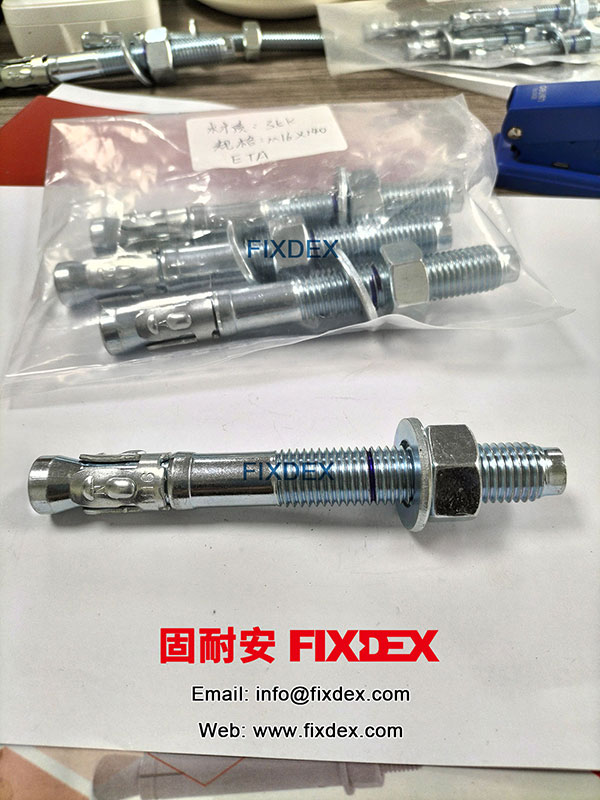On August 15, 2023, the President of Mexico signed a decree, starting from August 16, raising steel (fastener raw materials), aluminum, bamboo products, rubber, chemical products, oil, soap, paper, cardboard, ceramic products, glass Most-favored-nation tariffs on a wide range of imports, including electrical equipment, musical instruments and furniture.
The decree increases import duties applicable to 392 tariff items. Almost all products in these tariff lines are now subject to the 25% import duty, and only certain textiles will be subject to the 15% duty. This modification of the import tariff rate came into effect on August 16, 2023 and will end on July 31, 2025.
Fasteners factory care of Which products have anti-dumping duties?
Regarding the products with anti-dumping duties listed in the decree, stainless steel from China and Taiwan; cold-rolled plates from China and Korea; coated flat steel from China and Taiwan; Imports such as seam steel pipes will be affected by this tariff increase.
The decree will affect trade relations and the flow of goods between Mexico and its non-FTA trading partners, the most affected countries and regions including Brazil, China, Taiwan, South Korea and India. However, countries with which Mexico has a free trade agreement (FTA) are not affected by the decree.
Nearly 92% of the products are subject to 25 tariffs. Which products are most affected, including fasteners?
Nearly 92% of the products are subject to 25 tariffs. Which products are most affected, including fasteners?
According to relevant statistics released by my country’s General Administration of Customs, China’s merchandise exports to Mexico will increase from US$44 billion to US$46 billion in 2018 to US$46 billion in 2021, to US$66.9 billion in 2021, and further increase to US$77.3 billion in 2022; In the first half of 2023, the value of China’s merchandise exports to Mexico has exceeded US$39.2 billion. Compared with the data before 2020, exports have increased by nearly 180%. According to customs data screening, the 392 tax codes listed in the Mexican decree involve an export value of about 6.23 billion U.S. dollars (based on the data in 2022, considering that there are certain differences in the customs codes of China and Mexico, the actual affected amount cannot be accurate for the time being. statistics).
Among them, the import tariff rate increase is divided into five levels: 5%, 10%, 15%, 20% and 25%, but those with substantial impact are concentrated on “windshield and other body accessories under item 8708″ (10% ), “textiles” (15%) and “steel, copper and aluminum base metals, rubber, chemical products, paper, ceramic products, glass, electrical materials, musical instruments and furniture” (25%) and other product categories.
The 392 tax codes involve a total of 13 categories of my country’s customs tariff categories, and the most affected are “steel products“, “plastics and rubber”, “transportation equipment and parts”, “textiles” and “furniture miscellaneous items” . These five categories will account for 86% of the total export value to Mexico in 2022. These five categories of products are also the product categories that have seen significant growth in China’s exports to Mexico in recent years. In addition, mechanical appliances, copper, nickel, aluminum and other base metals and their products, shoes and hats, glass ceramics, paper, musical instruments and parts, chemicals, gemstones and precious metals also increased to varying degrees compared with 2020.
Taking my country’s export of auto parts to Mexico as an example, according to incomplete statistics (the tariffs between China and Mexico do not fully correspond), among the 392 tax codes adjusted by the Mexican government this time, the products with tax codes related to the automobile industry in 2022, China Exports to Mexico accounted for 32% of China’s total exports to Mexico that year, reaching US$1.962 billion; while exports of similar automobile products to Mexico in the first half of 2023 reached US$1.132 billion. According to industry estimates, China will export an average of US$300 million in auto parts to Mexico every month in 2022. That is, in 2022, China’s auto parts exports to Mexico will exceed US$3.6 billion. The difference between the two is mainly because there are still a considerable number of auto parts tax numbers, and the Mexican government has not included them in the scope of the increase in import taxes this time.
Supply chain strategy (friendshoring)
According to Chinese customs statistics, electronics, industrial machinery, vehicles and their parts are the main products imported by Mexico from China. Among them, the growth rate of vehicles and their spare parts products is more typical, with a year-on-year increase of 72% in 2021 and a year-on-year increase of 50% in 2022. From the perspective of specific products, China’s export of freight motor vehicles (4-digit customs code: 8704) to Mexico will increase by 353.4% year-on-year in 2022, and will increase by 179.0% year-on-year in 2021; An increase of 165.5% and a year-on-year increase of 119.8% in 2021; motor vehicle chassis with engines (4-digit customs code: 8706) a year-on-year increase of 110.8% in 2022 and a year-on-year increase of 75.8% in 2021; and so on.
What needs to be vigilant is that Mexico’s decree on increasing import tariffs does not apply to countries and regions that have signed trade agreements with Mexico. In a sense, this decree is also the latest manifestation of the US government’s “friendshoring” supply chain strategy.
Post time: Aug-28-2023


